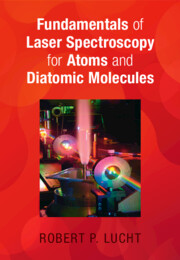Refine search
Actions for selected content:
476 results
Five - Negotiating Difference in Marriage
-
- Book:
- Marriage and the Moral Imagination
- Published online:
- 12 December 2025
- Print publication:
- 22 January 2026, pp 144-177
-
- Chapter
- Export citation
Progress in modeling of carbon capture technologies
-
- Journal:
- Cambridge Prisms: Carbon Technologies / Volume 1 / 2025
- Published online by Cambridge University Press:
- 13 August 2025, e5
-
- Article
-
- You have access
- Open access
- HTML
- Export citation
Chapter 3 - Absorption and the Satisfactions of Competence in the Gothic Novel
- from Part 2 - Popular Subgenres
-
- Book:
- Getting Lost in the Novel
- Published online:
- 26 July 2025
- Print publication:
- 07 August 2025, pp 91-111
-
- Chapter
- Export citation
Scattering parameters of a wet radome
-
- Journal:
- International Journal of Microwave and Wireless Technologies / Volume 17 / Issue 5 / June 2025
- Published online by Cambridge University Press:
- 27 June 2025, pp. 862-873
-
- Article
-
- You have access
- Open access
- HTML
- Export citation
On perfect subdivision tilings
- Part of
-
- Journal:
- Combinatorics, Probability and Computing / Volume 34 / Issue 3 / May 2025
- Published online by Cambridge University Press:
- 27 January 2025, pp. 421-444
-
- Article
- Export citation
Exploring the relationship between dissociative experiences and recovery in psychosis: cross-sectional study
-
- Journal:
- BJPsych Bulletin , FirstView
- Published online by Cambridge University Press:
- 27 January 2025, pp. 1-10
-
- Article
-
- You have access
- Open access
- HTML
- Export citation
Water-seeded rice seedling response to soil–water partitioning of pendimethalin
-
- Journal:
- Weed Science / Volume 73 / 2025
- Published online by Cambridge University Press:
- 22 December 2024, e13
-
- Article
-
- You have access
- Open access
- HTML
- Export citation
1 - Introduction
-
- Book:
- Fundamentals of Laser Spectroscopy for Atoms and Diatomic Molecules
- Published online:
- 12 December 2024
- Print publication:
- 19 December 2024, pp 1-15
-
- Chapter
- Export citation
6 - Absorption and Emission Spectroscopy
-
- Book:
- Fundamentals of Laser Spectroscopy for Atoms and Diatomic Molecules
- Published online:
- 12 December 2024
- Print publication:
- 19 December 2024, pp 236-258
-
- Chapter
- Export citation

Fundamentals of Laser Spectroscopy for Atoms and Diatomic Molecules
-
- Published online:
- 12 December 2024
- Print publication:
- 19 December 2024
A meta-analysis of frequency selective rasorber (FSR)
-
- Journal:
- International Journal of Microwave and Wireless Technologies / Volume 16 / Issue 9 / November 2024
- Published online by Cambridge University Press:
- 05 November 2024, pp. 1465-1480
-
- Article
- Export citation
The good, the bad and the ugly: Critical insights on the applications of microbes in microplastic degradation
-
- Journal:
- Cambridge Prisms: Plastics / Volume 2 / 2024
- Published online by Cambridge University Press:
- 10 October 2024, e27
-
- Article
-
- You have access
- Open access
- HTML
- Export citation
Absorption of Infrared Radiation by D2O and HDO Mixed with Montmorillonite
-
- Journal:
- Clays and Clay Minerals / Volume 28 / Issue 2 / April 1980
- Published online by Cambridge University Press:
- 01 July 2024, pp. 111-118
-
- Article
- Export citation
Endothall and 2,4-D activity in milfoil hybrid (Myriophyllum spicatum × M. sibiricum) when applied alone and in combination
-
- Journal:
- Weed Science / Volume 72 / Issue 4 / July 2024
- Published online by Cambridge University Press:
- 08 May 2024, pp. 346-351
-
- Article
-
- You have access
- Open access
- HTML
- Export citation
9 - Solar Radiation and Its Atmospheric Interactions
- from Part III - Radiant Energy
-
- Book:
- The Science of Our Changing Climate
- Published online:
- 05 April 2024
- Print publication:
- 02 May 2024, pp 149-162
-
- Chapter
- Export citation
Reduction and Sorption of Chromium by Fe(II)-Bearing Phyllosilicates: Chemical Treatments and X-Ray Absorption Spectroscopy (XAS) Studies
-
- Journal:
- Clays and Clay Minerals / Volume 48 / Issue 2 / April 2000
- Published online by Cambridge University Press:
- 28 February 2024, pp. 272-281
-
- Article
- Export citation
7 - Immigration and aliens powers
- from Part 2 - Legislative powers
-
- Book:
- Australian Constitutional Law
- Published online:
- 14 December 2023
- Print publication:
- 04 January 2024, pp 169-200
-
- Chapter
- Export citation
Cytotoxicity and Biokinetic Evaluation of Clay Minerals
-
- Journal:
- Clays and Clay Minerals / Volume 67 / Issue 1 / 15 February 2019
- Published online by Cambridge University Press:
- 01 January 2024, pp. 91-98
-
- Article
- Export citation
Personality change in a trial of psilocybin therapy v. escitalopram treatment for depression
-
- Journal:
- Psychological Medicine / Volume 54 / Issue 1 / January 2024
- Published online by Cambridge University Press:
- 02 June 2023, pp. 178-192
-
- Article
-
- You have access
- Open access
- HTML
- Export citation
The study of bioavailability and endogenous circadian rhythm of menaquinone-7, a form of vitamin K2, in healthy subjects
-
- Journal:
- British Journal of Nutrition / Volume 130 / Issue 11 / 14 December 2023
- Published online by Cambridge University Press:
- 03 May 2023, pp. 1885-1897
- Print publication:
- 14 December 2023
-
- Article
-
- You have access
- HTML
- Export citation


























